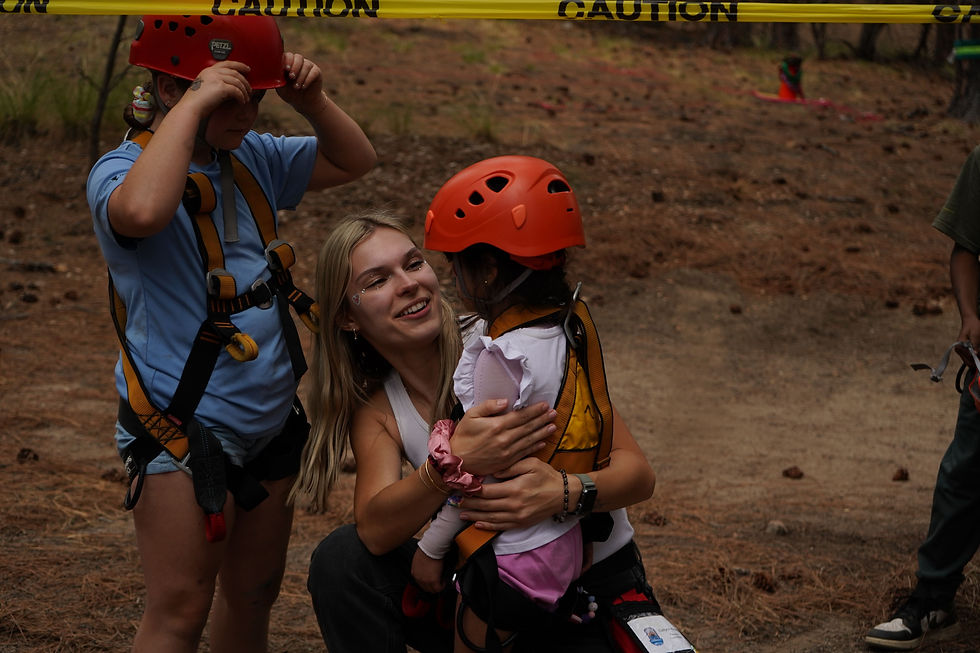Arts Access on Wheels: Wolf Trap Expands Reach Across Arizona
- Doyal D'angelo Bolin
- May 1
- 4 min read
Updated: May 5
By Doyal D'Angelo
In early childhood classrooms across Arizona, students from pre-K to 2nd grade are clapping to rhythm, dancing through storybooks, and experiencing live ballet, some for the first time in their young lives. Through the Wolf Trap program, Herberger Theater Center is extending performing arts beyond the occasional field trip or special event.
Originally delivered inside Herberger's downtown Phoenix theater, Wolf Trap has evolved. With support from The Burton Family Foundation and other supporters, the program now employs a mobile model that brings teaching artists, dance-based learning, and live performances directly into under-resourced schools.
Cescily Wiener, director of community engagement at Herberger, has ample experience in theater and has seen how the arts has taken a back seat, often due to financial strain for schools and families.

"Getting students to the theater is not always realistic for our communities," Wiener said. "So we rethought the program. We started going to them."
This strategic shift is making a measurable difference. In 2025 alone, Wolf Trap will serve approximately 1,500 students across Maricopa and Pinal Counties, with many living at or below the poverty line. These students attend Title I schools, often in areas where arts education has been absent for years.
Despite the recognized benefits of arts education, significant gaps persist in Arizona, particularly affecting young learners in underserved communities.
According to the Arizona Arts Education Data Project's 2020-2021 report, while 89% of students had access to at least one arts discipline, only 66% had access to the state-required two arts disciplines. This leaves approximately 100,000 children without any arts instruction.
Schools with higher percentages of students eligible for free and reduced lunch are more likely to lack arts programs, highlighting inequities in access based on socioeconomic status and the importance of this program.
A Nationally Recognized Approach
Wolf Trap is a nationally recognized, arts-integrated program that combines music, dance, and storytelling to support early learning, and that confluence helps to enhance language development, motor skills, and social-emotional growth.
While the foundation of the program remains the same, the delivery has evolved. Herberger's team now offers both in-theater and in-school programming, providing flexibility for schools facing transportation, budget, or staffing barriers, challenges that have become commonplace post-Covid.
Each participating school receives:
Movement-based classroom workshops led by professional "teaching artists"
A live performance of The Snow Queen, either in the theater or on campus
Storybooks and bilingual curriculum materials for continued learning
Teacher coaching and follow-up support to encourage ongoing arts integration
"We're meeting each school where they are, logistically, culturally, and financially," Wiener said. "It's not just about bringing a show. It's about building something sustainable and developmentally meaningful."
Herberger's team has witnessed firsthand the impact this work has on both students and teachers. Laurene Austin, director of development at Herberger, describes the transformation in her eyes. "When you see a student light up just from hearing the first note of music, you realize how much they've been missing. The arts awaken something in them that standard instruction doesn't always reach."
Teachers report that after participating in the program, students show increased focus, coordination, and verbal expression. Some have even incorporated choreography from The Snow Queen into daily classroom transitions and playtime.
"One teacher told us their students wouldn't stop dancing the ballet after we left," Austin said. "They were still acting out the story days later. It stuck with them."
This highlights an important nuance in teaching to the youth. Once you find something that children can resonate with, they are more malleable to instruction.
Participating schools in Wolf Trap this year include ASU Prep campuses (Fillmore, South Phoenix, and Pilgrim Rest), Navajo Elementary, Laguna Elementary, and several others located across Phoenix, Scottsdale, and the Gila River Indian Community.
All participating classrooms receive free programming, with support from community partners
helping to cover the costs of teaching artists, transportation, and materials.
Building for the Long Term
"We're not here to fill a gap for a semester and move on," Austin said. "We're here to build something long-term that integrates with how these schools function and grow."
Evaluation is built into the program from the start. Teachers are surveyed to measure shifts in student engagement, rhythm, and movement. They're also asked about their own classroom practices and how likely they are to use arts-integrated strategies throughout the year.
The program aims to increase teacher retention of Wolf Trap techniques by 25% and to continue expanding into new rural and tribal communities.
"We're not trying to create a 'wow moment' and disappear," Wiener said. "We want students and teachers to feel like the arts are theirs to keep."
The Wolf Trap program thrives through deep collaboration with schools, teachers, teaching artists, families, and local partners, allowing it to remain nimble, creative, and community-focused.
"It works because everyone is aligned around the same values: equity, access, and early investment," Austin said. "We believe in starting early. And we believe in starting where the need is greatest."
The focus remains simple: show up, teach with care, and make sure no child is left out of the arts.
You can learn more about the Wolf Trap program at Herberger Theater Center here.
Photos courtesy of Herberger Theater Center.



